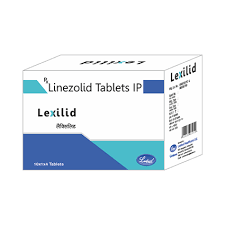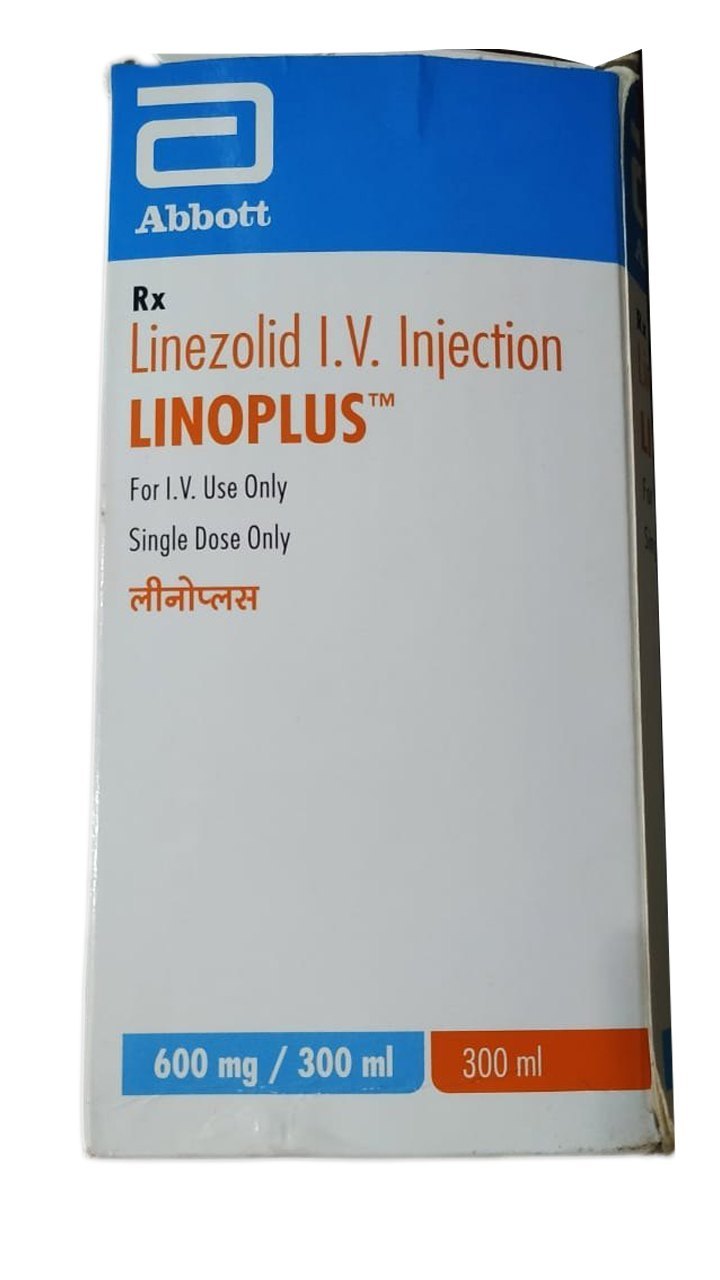Linezolid
Bacterial Skin Diseases, Bacterial Pneumonia ... show more
DRUG STATUS

Approvals
US(FDA), UK(BNF)

Essential Medicine
YES

Teratogenicity
Unlisted

Pharmaceutical Class
Oxazolidinone Antibacterial

Linezolid
Know More About This Medicine -
Click HereSummary
Linezolid is an antibiotic used to treat serious bacterial infections such as pneumonia, lung infection, and skin infections. It is particularly effective against MRSA infections and bacteria that are resistant to other antibiotics.
Linezolid works by stopping bacteria from producing the proteins they need to survive. It's easily absorbed when taken orally, quickly getting into your body and targeting the infection. A small part binds to proteins in your blood, and the rest is broken down into harmless substances.
Adults typically take 600 milligrams of Linezolid orally twice a day, every 12 hours. Children under 12 are prescribed a different amount based on their weight. The medicine should be taken with a full glass of water, with or without food.
Common side effects of Linezolid include headache, diarrhea, nausea, and vomiting. Less common but more serious side effects can include changes in blood cells, vision problems, and issues with blood sugar, body chemicals, and muscle function.
Linezolid should not be taken with MAOIs or warfarin due to potential dangerous interactions. It should also be avoided during pregnancy unless the benefits outweigh the risks. Certain foods high in tyramine should be avoided as they can lead to a dangerous increase in blood pressure. Regular blood tests are recommended, especially for long-term use, to check for potential issues with blood cells.
Indications and Purpose
What is Linezolid used for?
Linezolid is an antibiotic that fights infections like pneumonia (lung infection) and skin infections. It works against some serious bacteria, even those that don't respond to other antibiotics like vancomycin. However, it doesn't work on all types of bacteria, and it's not meant to be taken for more than 28 days.
How does Linezolid work?
Linezolid is a powerful antibiotic that's easily absorbed when you take it by mouth. It quickly gets into your body and goes to where it's needed. A small part of it binds to proteins in your blood, and the rest is broken down into harmless substances. Importantly, it can also affect other things in your body, so it's important to tell your doctor about any other medicines you're taking, especially those for heart or mental health.
Is Linezolid effective?
Linezolid has been proven to be effective in treating a range of bacterial infections, particularly MRSA infections, in several clinical trials.
How does one know if Linezolid is working?
Linezolid is a medicine tested against other medicines to see how well it works. Tests showed it cured about 57% of people with a serious lung infection (compared to 60% cured with another medicine), and 90% of people with severe skin infections (compared to 85% with another medicine). These are just examples; it works differently in different infections.
Directions for Use
What is the usual dose of Linezolid?
Adults get 600 milligrams of medicine twice a day, every 12 hours. Kids under 12 get a different amount based on their weight: 10 milligrams for every kilogram they weigh, three times a day, every 8 hours. Kids 12 and older get the same dose as adults.
How do I take Linezolid?
Linezolid can be taken with or without food, but it should be taken with a full glass of water.
Patients should avoid taking certain foods that are high in tyramine, such as aged cheeses, cured meats, pickled foods, and sauerkraut. These foods can interact with Linezolid, leading to a dangerous increase in blood pressure.
For how long do I take Linezolid?
This medicine is good for only three weeks. After 21 days, throw away any that's left.
How long does it take for Linezolid to start working?
Linezolid, a medicine, gets to its highest level in your blood within 1 to 2 hours if you take it on an empty stomach. Eating a fatty meal slows this down and lowers the peak level by a bit (about 17%). However, the total amount of medicine your body absorbs stays about the same whether you eat or not.
How should I store Linezolid?
Keep the Linezolid pills in a cool, dry place between 68°F and 77°F. The liquid medicine should be kept at 77°F. It's okay if the temperature is slightly higher or lower, but keep it between 59°F and 86°F. Keep both the pills and the liquid away from light and moisture; keep the bottles closed tightly. Once you mix the liquid medicine, use it within 21 days and keep it at room temperature.
Warnings and Precautions
Who should avoid taking Linezolid?
Linezolid is a strong antibiotic, but it can have serious side effects. It's important to get regular blood tests, especially if you take it for a long time, to check for problems with your blood cells. You should also tell your doctor right away if you have any vision problems, feel sick to your stomach, have muscle pain or weakness, or notice dark urine, confusion, sleepiness, or trouble breathing. Linezolid only works against bacteria, not viruses, and you must finish the entire course of medicine; otherwise, the bacteria can become resistant. Diarrhea is common, but see a doctor immediately if it's watery or bloody. Don't take linezolid with other medications that affect serotonin levels without your doctor's close watch.
Can I take Linezolid with other prescription drugs?
Monoamine oxidase inhibitors (MAOIs): Taking Linezolid with MAOIs can cause a dangerous increase in blood pressure and heart rate.
Warfarin: Taking Linezolid with warfarin can increase the risk of bleeding by increasing the effects of warfarin.
Can I take Linezolid with vitamins or supplements?
Linezolid is a medicine. Taking it with vitamin C or vitamin E doesn't significantly change how much of the medicine your body absorbs. The increase is so small (less than 11%) that doctors don't recommend changing the Linezolid dose.
Can Linezolid be taken safely while pregnant?
Linezolid is classified as a Pregnancy Category C drug, with limited information available on its safety during pregnancy. Pregnant women should avoid taking Linezolid unless the potential benefits outweigh the potential risks.
Can Linezolid be taken safely while breastfeeding?
Linezolid, a medicine mothers might take, passes into breast milk in small amounts (about 6-9% of the mother's dose). Babies who breastfeed may get a little bit of the medicine. The most common side effects in babies are diarrhea and vomiting. Doctors weigh the good things about breastfeeding against any possible problems for the baby from this medicine before making a decision.
Is Linezolid safe for the elderly?
Linezolid is a medicine that, in some people, can cause low sodium levels in the blood (hyponatremia) which can lead to confusion, sleepiness, weakness, and trouble breathing. This is more likely in older adults and those already taking water pills (diuretics). If these symptoms occur, stop taking Linezolid and get medical help. It can also cause low blood sugar (hypoglycemia), especially for people with diabetes, so blood sugar should be checked regularly.
Is it safe to exercise while taking Linezolid?
Alcohol should generally be avoided, as it may increase the risk of side effects like dizziness or high blood pressure.
Is it safe to drink alcohol while taking Linezolid?
Alcohol should generally be avoided, as it may increase the risk of side effects like dizziness or high blood pressure.






.svg)

